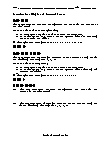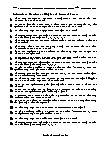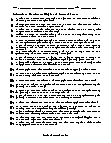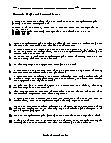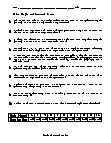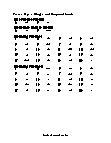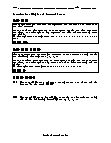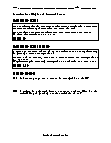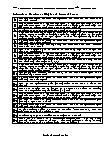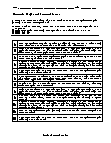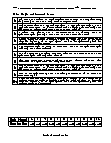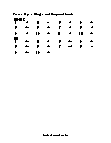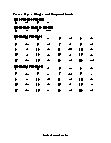Single and Compound Events Worksheets
What is the Difference Between Single and Compound Events? Single probability is defined as knowing the likelihood of occurrence of an event. As we evaluate only one event, we only get one outcome. For finding out the probability of the single event, we use the formula: the number of favorable outcomes divided over the number of total outcomes. For example, in a coin flip, chances of getting head and tail are equal. The tail can occur one time, and the head can occur one time too. The total number of outcomes in a coin flip is 2. So, if we apply single probability formula, if we get tail (or head), we will write 1 in the numerator (favorable outcome) and 2 in the denominator (total number of outcomes). Compound probability is defined as the chances of occurrences of two independent events. Compound probability is expressed as the product of the likelihood of the first event into the probability of the second event. One of the most basic examples of compound probability is of flipping a coin twice. In a coin flip, the chances of getting a head are 50 percent, and the chances of getting a tail are also 50 percent. However, getting a head or tail twice in a row will be 0.25 or 0.50 x 0.50. compound probability is the combination of two simple events to achieve a compound event. The probability that coin will give you heads when tossed once is the simple event.
-
Basic Lesson
Introduces compound events and their affect on probability outcomes. How many different 4-letter arrangements are there of the letters in the word PARK?
View worksheet -
Intermediate Lesson
This lesson focuses on calculating probabilities when faced with combinations. Lisa can order one of 2 different cold drinks and one of 8 different ice-creams. How many combinations are there for her? Lisa can order 2 different cold drink with 8 different ice creams.
View worksheet -
Independent Practice 1
Students practice with 20 Single & Compound Events problems. The answers can be found below. How many different four-digit numerals can be written using all of the following four digits: 3,4,5,7
View worksheet -
Independent Practice 2
Another 20 Single & Compound Events problems. The answers can be found below. A glass door comes in 6 styles, with 3 different filter coatings. How many possible combinations of door are there?
View worksheet -
Homework Worksheet
Reviews all skills in the unit. A great take home sheet. Also provides a practice problem.
View worksheet -
Basic Lesson
Introduces the concept of predicting multiple chance outcomes with sequences.
View worksheet -
Intermediate Lesson
This lesson focuses on determining the probability of multiples and combinations being chosen.
View worksheet -
Independent Practice 1
Students practice with 20 Single & Compound Events problems. The answers can be found below.
View worksheet -
Independent Practice 2
Another 20 Single & Compound Events problems. The answers can be found below.
View worksheet -
Homework Worksheet
Reviews all skills in the unit. A great take home sheet. Also provides a practice problem.
View worksheet
How to Determine Single and Compound Events?
Single probability is defined as knowing the likelihood of occurrence of an event. As we evaluate only one event, we only get one outcome. For finding out the probability of the single event, we use the formula: the number of favorable outcomes divided over the number of total outcomes. For example, in a coin flip, chances of getting head and tail are equal. The tail can occur one time, and the head can occur one time too. The total number of outcomes in a coin flip is 2. So, if we apply single probability formula, if we get tail (or head), we will write 1 in the numerator (favorable outcome) and 2 in the denominator (total number of outcomes). Compound probability is defined as the chances of occurrences of two independent events. Compound probability is expressed as the product of the likelihood of the first event into the probability of the second event. Compound probability (CP) is the possibility of a common phenomenon of two or more simplistic cases. Either all cases can be valid at the corresponding time, or they can be accurate at the same time. When at least one of the cases keeps true at a time in a compound event, then either the cases are jointly independent, else they are non-jointly exclusive. Formula: In the events when the cases are exclusive, the compound probability(CP) can be estimated by. multiplying the possibility of the two cases straight. X and Y = Two exclusive cases. Then, P (X and Y) = P (X) * P (Y). When the cases are reliant on, the CP will be: P(X and Y)=P(X) * P(Y following X). Here, both the compound event's parts are genuine. The case when one or more compound event parts. are correct, the mathematical form of the compound event will be: P (X or Y) = P (X) + P (Y). Here, AND = All compound event's parts are true at a time. OR = Either of both parts is valid at a corresponding time. Use OR for jointly exclusive events and use AND for non-jointly independent events. One of the most basic examples of compound probability is of flipping a coin twice. In a coin flip, the chances of getting a head are 50 percent, and the chances of getting a tail are also 50 percent. However, getting a head or tail twice in a row will be 0.25 or 0.50 x 0.50. compound probability is the combination of two simple events to achieve a compound event. The probability that coin will give you heads when tossed once is the simple event.
The License Plate...
A man buys a new car and orders a personalized license plate form the dealer. When it arrives, the numbers on the plate read: 337 31770. What is the man's name? Answer: His name is Ollie Lee. How did we know that? Read his new license plate upside down!
